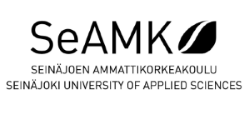Practical training
The purpose of the studies at universities of applied sciences is to integrate the worlds of work and profession into students educational career. Lectures by representatives of the working world, Project Studies, visits to companies and organisations as well as seminars and theses related to various aspects in the working world are ways in which studies are brought closer to the working world.
Obligatory training provides students with a concrete experience of what working in their chosen profession is like. Depending on the degree programme, the practical training takes place during the course of one spring or autumn semester or during several shorter periods during the academic year. Practical trainings can take place also in the summer. Practical training is equivalent to 30 to 90 credits, depending on the degree programme. Amount of practical training in the fields of health care and social welfare is remarkable. Learning outcomes, contents and criteria for evaluation are described in the curriculum of each degree programme.
The UAS practical training is a systematic and supervised period of study where students work in real work environments. During their practical training, students learn about work procedures and environments as well as professional interaction and interaction with customers at the practical level with the help of their supervisors. Oftentimes, the practical training is linked to students’ final thesis, and it may be a way of finding one’s first field-related job.
Students search for their practical training placements by their own initiative. Students in the fields of health care and social welfare and agriculture are an exception; their Faculties mainly arrange the placements for them. The supervisors in all field of study assist students in choosing a placement that corresponds to their field of education and interests. Practical training is a significant part of students’ studies. Students are encouraged to be active in planning and choosing the placement that best suits them.
Additional information about practical training is available from the teachers involved, study advisors, and the coordinators for the degree programmes.

